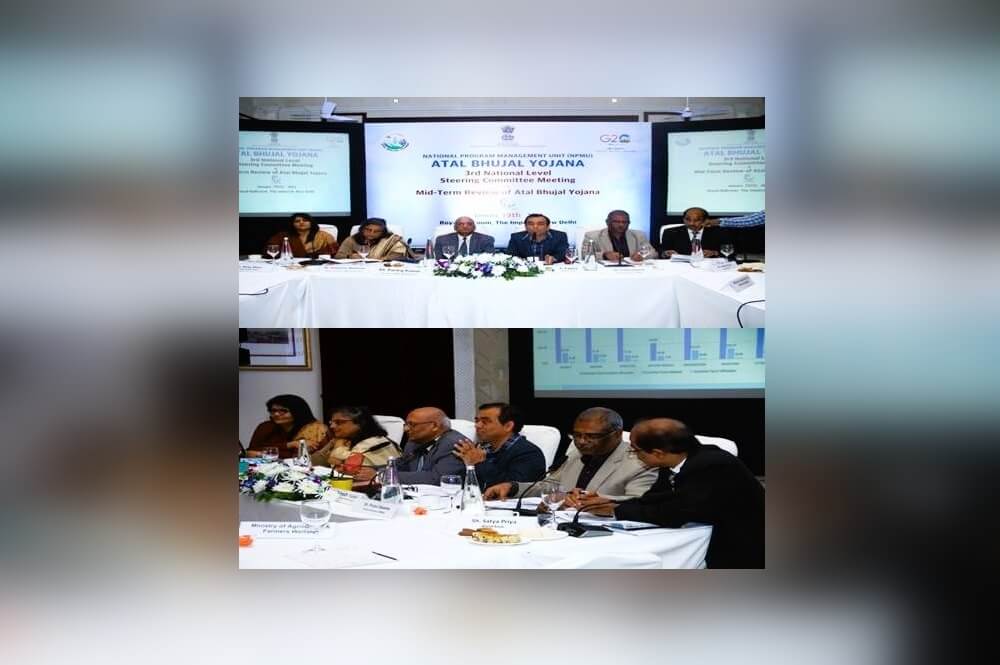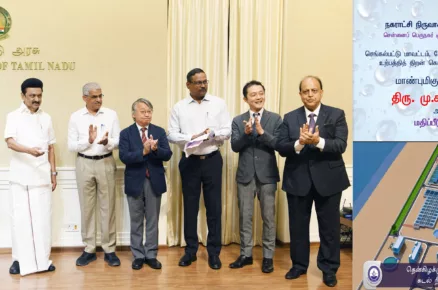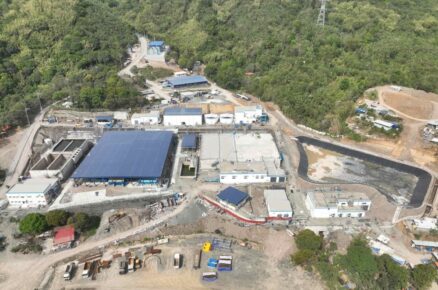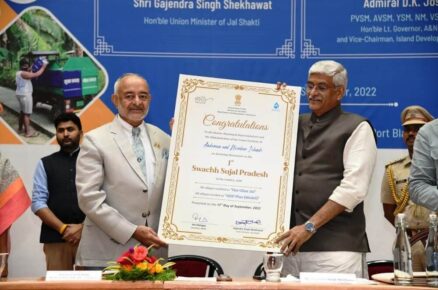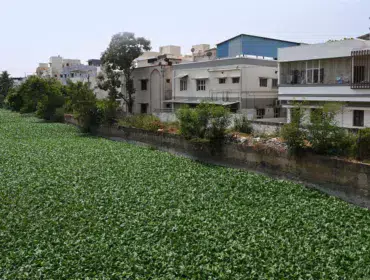- The committee directed the states to expedite convergence for the implementation of the interventions proposed under water security plans
- One of the key aspects of ATAL JAL is to bring in behavioural changes in the community, from the prevailing attitude of consumption to conservation and smart water management
- Sustainability of drinking water sources are to be given utmost priority while taking up interventions under this scheme
WD News: The third meeting of the National Level Steering Committee (NLSC) of the Atal Bhujal Yojana was held in New Delhi under the Chairmanship of Shri Pankaj Kumar, Secretary, Department of Water Resources, RD & GR, Ministry of Jal Shakti.
The meeting was attended by senior officers of 7 states where the scheme is being implemented as well as some line departments. Special Secretary and Joint Secretary, DoWR, RD & GR along with Principal Secretary, Uttar Pradesh, and Secretaries from Karnataka and Gujarat were also present.
Atal Bhujal Yojana (ATAL JAL) is being implemented as a central sector scheme since April 2020 in 8220 water-stressed Gram Panchayats of 229 administrative blocks/ talukas in 80 districts of seven States, viz. Gujarat, Haryana, Karnataka, Madhya Pradesh, Maharashtra, Rajasthan, and Uttar Pradesh for five years (2020-25).
One of the key aspects of ATAL JAL is to bring in behavioural changes in the community, from the prevailing attitude of consumption to conservation and smart water management. This message must be driven across all levels, especially at the grass-root level, so that the objectives of the scheme are achieved. The creation of awareness among the general public about the program objectives and the creation of an enabling environment for scheme implementation at various levels through Information, Education, and Communication (IEC) is an important activity under this scheme. Awareness campaigns have been undertaken using different media of mass communication. The thrust of the campaign is at the GP level, where communication tools such as Nukkad Natak (street plays), audio-visual clips, wall-writing, display boards, pamphlets, and cable TV are being extensively used.
The committee reviewed the overall progress of the scheme and directed the states to expedite convergence for the implementation of the interventions proposed under Water Security Plans (WSPs). Completion of the majority of the WSPs was praised by the Secretary and at the same time it was emphasised that this is an iterative process and the WSPs are to be updated annually in consultation with the community.
The Secretary underscored that the sustainability of the drinking water sources is to be given utmost priority while taking up interventions under this scheme. Further, since incentive money is an untied fund, it can be used for undertaking pilot projects in any of the Atal Jal Gram Panchayat to sustain groundwater.
Since communities are at the forefront of this scheme, the importance of the capacity building of the communities was also emphasised. The Special Secretary, DoWR, RD & GR highlighted the importance of continued engagement with the community with a focus on the aim that the WSPs are to be owned by the communities. For that regular IEC and awareness activities are to be continued.
The NLSC meeting was followed by a wrap-up of the Mid Term Review by the World Bank, wherein the Task Team Leader for the scheme summarised the month-long mission in terms of overall and state-wise progress and challenges. One of the main challenges which were highlighted was low convergence by the states as compared to what was expected. Since convergence is the backbone of the next round of incentives, it is important to speed up this activity.
All 7 states also presented the best practices under Atal Bhujal Yojana which is happening in their respective state and how this scheme is bringing change in groundwater management.
Source & image courtesy: PIB




